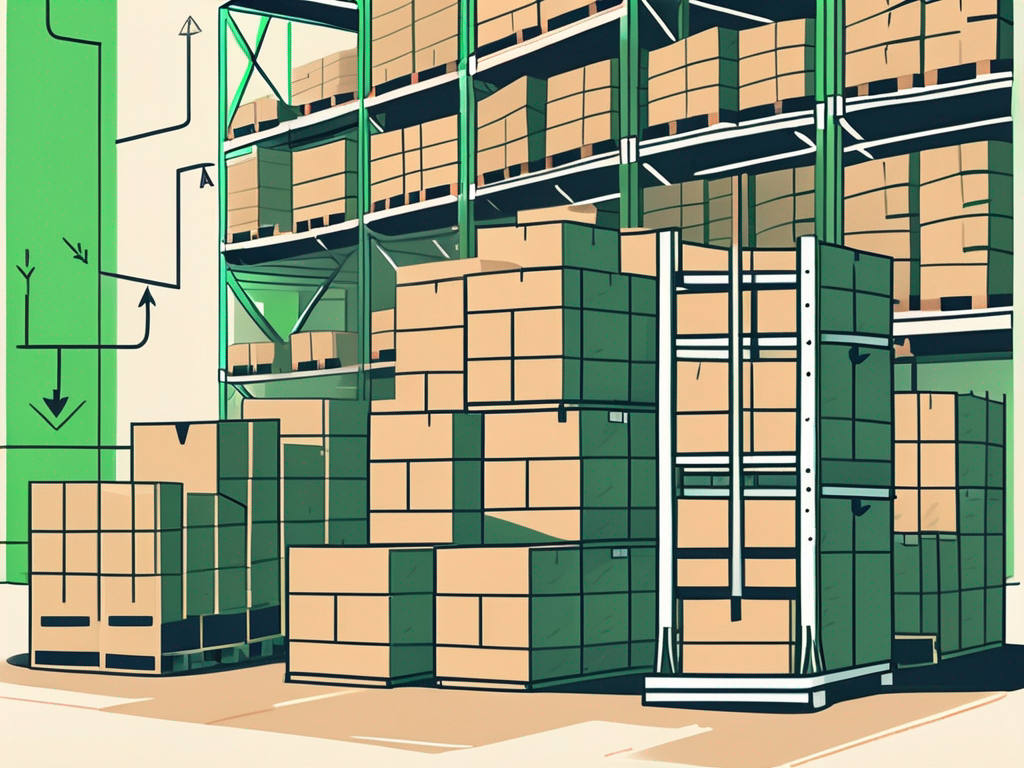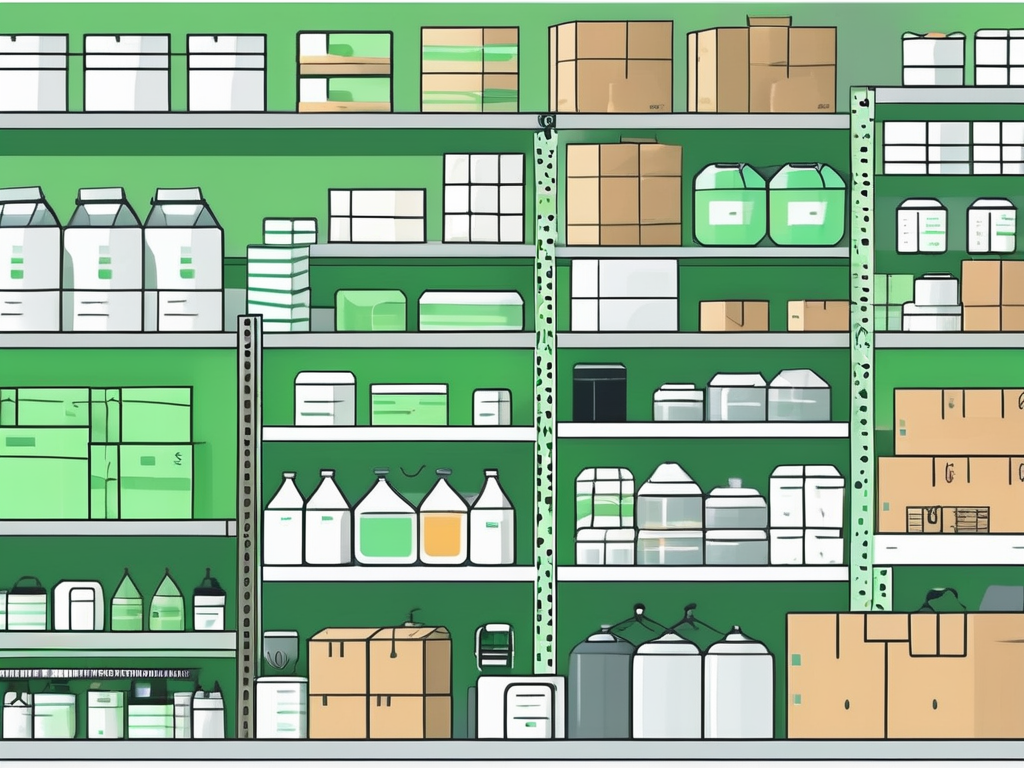Merchandise Inventory Includes: The Ultimate Guide To Managing Your Stock Like A Pro
Let me tell you something, folks. Managing merchandise inventory includes more than just counting products in your warehouse. It’s like running a marathon while juggling oranges – it requires focus, strategy, and a bit of madness. Whether you’re a small business owner or a retail giant, understanding what merchandise inventory includes is the difference between success and disaster. So, buckle up because we’re diving deep into this world of stock management.
Imagine this: You walk into a store, ready to buy that perfect pair of sneakers you’ve been eyeing. But guess what? They’re out of stock. Frustrating, right? Now imagine being the store owner who didn’t anticipate this demand. That’s where merchandise inventory management comes in. It’s all about knowing what to stock, how much to stock, and when to restock. And trust me, it’s not as easy as it sounds.
This guide will take you through everything you need to know about merchandise inventory includes. From the basics to advanced strategies, we’ll cover it all. So, whether you’re a newbie or an old pro looking to sharpen your skills, you’re in the right place. Let’s get started!
Read also:Does Kash Patel Have A Glass Eye Unveiling The Truth Behind The Controversy
What Exactly Does Merchandise Inventory Includes?
Alright, let’s break it down. Merchandise inventory includes all the goods you have in your possession that are intended for sale. It’s not just about the physical products on your shelves; it also covers items in transit, products being manufactured, and even raw materials if you’re into custom goods. Think of it as the backbone of your retail operations.
Here’s a quick breakdown:
- Finished Goods: The products ready to be sold to customers.
- Raw Materials: The components used to create finished goods.
- Work-in-Progress: Products that are still in the process of being manufactured.
- Items in Transit: Goods that are being transported from suppliers to your warehouse.
Understanding these categories is crucial because they all play a part in your overall inventory management. It’s like having a team, and each member has a specific role to play.
Why Is Merchandise Inventory Management So Important?
Managing merchandise inventory includes more than just keeping track of numbers. It’s about ensuring that your business runs smoothly, efficiently, and profitably. Without proper inventory management, you could end up with too much stock, tying up your cash flow, or worse, not enough stock to meet customer demand.
Here’s why it matters:
- Cost Efficiency: Proper inventory management helps reduce costs by minimizing excess stock and preventing stockouts.
- Customer Satisfaction: Having the right products available when customers want them leads to happier customers and repeat business.
- Improved Cash Flow: By optimizing inventory levels, you free up capital that can be used for other business needs.
So, if you’re thinking that merchandise inventory management is just about counting boxes, think again. It’s a strategic function that can make or break your business.
Read also:Understanding Mahomes Daughter Illness Causes Symptoms And Treatment
Key Components of Merchandise Inventory Includes
Finished Goods
These are the stars of the show. Finished goods are the products that are ready to be sold to customers. They’ve been manufactured, packaged, and are sitting pretty on your shelves or in your warehouse, waiting for their moment to shine.
Raw Materials
For businesses that manufacture their own products, raw materials are a crucial part of merchandise inventory includes. These are the building blocks of your finished goods, and managing them effectively can significantly impact your production process.
Work-in-Progress
Think of work-in-progress as the middle child of inventory management. It’s the stage where raw materials are being transformed into finished goods. Keeping track of this stage is essential to ensure that production is running smoothly and efficiently.
Items in Transit
Finally, we have items in transit. These are the goods that are on their way from suppliers to your warehouse. Managing this part of your inventory is crucial to ensure that you have a steady flow of products and avoid any disruptions in your supply chain.
Strategies for Effective Merchandise Inventory Management
Now that we know what merchandise inventory includes, let’s talk about how to manage it effectively. There are several strategies you can employ to ensure that your inventory is always in check.
First In, First Out (FIFO)
FIFO is a method where the oldest stock is sold first. This is particularly useful for perishable goods or products that have a limited shelf life. By using FIFO, you reduce the risk of spoilage and waste.
Just-In-Time (JIT)
JIT is all about timing. It’s a strategy where you receive goods just as you need them, reducing the need for large storage spaces and minimizing holding costs. However, it requires precise planning and reliable suppliers.
ABC Analysis
ABC analysis categorizes your inventory based on value and importance. ‘A’ items are the most valuable and critical, ‘B’ items are moderately important, and ‘C’ items are the least critical. This helps you focus your efforts on the items that matter most.
Common Challenges in Merchandise Inventory Includes
Managing merchandise inventory includes its fair share of challenges. Here are some common ones:
- Overstocking: Having too much inventory can lead to increased holding costs and potential waste.
- Stockouts: Not having enough inventory can lead to lost sales and unhappy customers.
- Forecasting Errors: Predicting demand accurately is difficult, and errors can lead to either overstocking or stockouts.
Addressing these challenges requires a combination of technology, data analysis, and good old-fashioned common sense.
Technology and Tools for Merchandise Inventory Management
In today’s digital age, there are plenty of tools and technologies that can help you manage your merchandise inventory includes more effectively.
Inventory Management Software
Software like QuickBooks, Zoho Inventory, and TradeGecko can help you track your inventory in real-time, automate reordering processes, and generate valuable reports.
Barcodes and RFID
Using barcodes and RFID tags can significantly improve the accuracy of your inventory tracking. These technologies allow you to quickly scan and update inventory levels, reducing the risk of errors.
Data Analytics
By analyzing data on sales trends, customer behavior, and market conditions, you can make more informed decisions about your inventory management. Tools like Google Analytics and Tableau can help you make sense of the data.
Best Practices for Merchandise Inventory Includes
Here are some best practices to keep in mind:
- Regular Audits: Conduct regular inventory audits to ensure that your records match your physical stock.
- Supplier Relationships: Build strong relationships with your suppliers to ensure reliable and timely deliveries.
- Employee Training: Train your staff on inventory management best practices to reduce errors and improve efficiency.
Implementing these practices can help you maintain a healthy and efficient inventory system.
Future Trends in Merchandise Inventory Management
The world of inventory management is constantly evolving. Here are some trends to watch out for:
- AI and Machine Learning: These technologies are being used to predict demand more accurately and automate inventory processes.
- Internet of Things (IoT): IoT devices can provide real-time data on inventory levels and conditions, improving accuracy and efficiency.
- Sustainability: More businesses are focusing on sustainable practices, including reducing waste and optimizing inventory levels.
Staying ahead of these trends can give you a competitive edge in the marketplace.
Conclusion
Managing merchandise inventory includes more than just counting boxes. It’s about understanding your business, your customers, and your market. By employing the right strategies, using the right tools, and following best practices, you can ensure that your inventory is always in check.
So, what are you waiting for? Start implementing these strategies today and take your inventory management to the next level. And don’t forget to share your thoughts and experiences in the comments below. Let’s keep the conversation going!
Table of Contents
- What Exactly Does Merchandise Inventory Includes?
- Why Is Merchandise Inventory Management So Important?
- Key Components of Merchandise Inventory Includes
- Strategies for Effective Merchandise Inventory Management
- Common Challenges in Merchandise Inventory Includes
- Technology and Tools for Merchandise Inventory Management
- Best Practices for Merchandise Inventory Includes
- Future Trends in Merchandise Inventory Management
- Conclusion


